Finding Barakah: The country where clean energy is a blessing
Lessons in collaboration and cooperation from the Middle East
One of the fastest projects in the world to deliver nuclear power – meeting as much as 25% of the electricity needs of a country with a population of over 9 million people – has been built in only a decade.
You’d think this news would have been more widely covered.
Instead of planning to stay dependent on fossil fuels, the United Arab Emirates (UAE) is attempting to transition to clean energy. Dubai, the most populous city in the UAE, is also one of the fastest-growing cities in the world, with one of the harshest climates.
The Barakah nuclear power plant, or Barakah Nuclear Energy Plant, is the United Arab Emirates' first nuclear power station, and the first commercial nuclear power station in the Arab world. It hosts four nuclear reactors in total, which are expected to supply around 25% of the UAE's electricity needs. It is situated in Abu Dhabi, the capital of the UAE.
Unit 1 of the country's first nuclear power plant was connected to the grid in 2020, followed by unit 2 in 2021 and unit 3 in 2022. Units 1, 2, and 3 are commercially operational, while unit 4 is undergoing post-construction testing and will be brought online imminently.
A blessing in disguise
According to the internet, the Arabic word Barakah translates as ‘blessing’, but my Muslim friend assures me that the concept is deeper than that, meaning “a feeling that you will have enough, and never want for anything you need.”
The Barakah power plant has already earned a special place among Emiratis, and its message is literally on the money – the power plant graces Emirati Dirhams and coins. Nuclear power is a blessing to those who value energy, but also want to protect the planet.
Why is the oil-rich UAE turning to nuclear energy? Alongside the country already experiencing water scarcity, drought, rising sea levels, and aridity, it hopes to be climate neutral by 2050. The state-run Emirates Nuclear Energy Corporation (ENEC) has emphasised the need to transition to clean technologies. The UAE also plans to export electricity to Gulf neighbours.
Barakah is essential for maintaining a high quality of life in a post-oil economy, while also reducing the nation’s carbon footprint. When fully operational, Barakah is expected to prevent around 21 million tons of carbon emissions every year – the equivalent of removing 4.8 million cars from the roads.
Building collaboration and cooperation
The UAE had to start from scratch when building Barakah, as it had no existing nuclear power industry or expertise. In 2006 the six member states of the Gulf Cooperation Council (GCC) – Kuwait, Saudi Arabia, Bahrain, the UAE, Qatar, and Oman – elected to commission a study on the peaceful uses of nuclear energy. In 2008, a white paper on nuclear energy was published.
In 2009, the UAE accepted a $20 billion bid from a South Korean consortium to build four commercial nuclear reactors, and started work on four South Korean designs – APR-1400 reactors. This was the first overseas nuclear power plant designed and built by South Korea and put their success with nuclear technology at home to the test abroad.
During the construction, South Korean President Yoon Suk Yeol visited the Barakah site, where the leaders of both countries met with the teams working at Barakah. Emirati and Korean nuclear energy experts worked side by side throughout the project with foreign specialists.
In his speech at the site, Yoon emphasised the collaborative aspect of the project, stating, “The Barakah nuclear fleet…holds great, monumental significance as it represents the special strategic partnership between the United Arab Emirates and the Republic of Korea.
“If our two countries join efforts in clean energy development ranging from renewable energy, hydrogen, to carbon capture, utilisation and storage, in addition to our existing cooperation area of nuclear power, which is symbolic of our friendship. It will not only enhance our two countries’ energy security, but also contribute to improving the global energy market’s stability.”
In a video showing the Sheikh’s visit to the power plant, workers emphasise how proud they are to be working with 50 different nationalities on this project, saying “we bring together different nationalities as a mutual advantage for strength.” This emphasis on collaboration has always been crucial to scientific progress, and the South Korea-UAE partnership shows how it is helping with the energy transition as well.
A realistic map to energy transition
UAE research projected increasing electricity capacity requirements from 15.5 GWe in 2008 to over 40 GWe in 2020. Imported coal was dismissed as an option due to environmental and energy security implications. They also found that renewables would be able to supply only 6-7% of the needed power by 2020, even though the country receives a relatively high amount of sunlight.
Nuclear power was therefore favoured “as a proven, environmentally promising and commercially competitive option which could make a significant base-load contribution to the UAE’s economy and future energy security."
The UAE proceeded with gusto, learning from experienced workers from abroad initially and transitioning to local expertise over time, and by working with a country that has proven how efficiently nuclear power plants can be built. If you’re curious to see the process in action, watch this timelapse video of the construction of Barakah.
The power plant’s reactors have been adapted to suit the climatic conditions of UAE, with larger pumps, plant cooling and seawater intake systems, and improved ventilation. The plant has also been designed to withstand earthquakes of a 7.0 magnitude or higher on the Richter scale – although it’s worth noting that the power plant meltdown after the earthquake in Fukushima did not claim any lives, and it had a magnitude of 9 on the Richter scale.
Citizens for clean energy
Nuclear energy has strong support in this part of the world. This is in part due to ongoing communication efforts, including outreach sessions conducted by ENEC that raise awareness of the UAE nuclear energy program, build trust with the public and correct misconceptions about nuclear energy.
A public opinion poll conducted in 2022 found that 83% of UAE residents think that the use of nuclear energy to generate electricity is important for meeting the UAE’s future energy needs, and 81% of UAE residents are in favour of nuclear energy in the UAE.
Developing national talent
When Sheikh Mohamed Bin Zayed Al Nahyan visited the power plant during its construction in 2020, he paid tribute to the workers, stating that “Today we witnessed remarkable progress at the Barakah Nuclear Energy Plant. We are grateful for the resilience and commitment of the Barakah team who truly represent this country’s pioneering spirit. This project is a source of pride for everyone who calls the UAE home.”
According to ENEC, with the certification of 39 more UAE citizens, Abu Dhabi now has 69 Emirati nuclear operators who are employed as reactor operators. Including the Emiratis, there are 193 nuclear operators in the country, who work alongside a host of international experts and are certified to operate the Barakah power plant in Abu Dhabi.
“When the Emirates Nuclear Energy Corporation was formed in 2009, the UAE did not have a single nuclear energy engineer. ENEC was not concerned, as it followed the UAE’s leading approach to developing the national talent, and with it the national intellect that was required to ensure the sustainable success of its civil nuclear energy programme,” ENEC has said.
On a separate occasion, Sheikh Mohammed bin Zayed al-Nahyan was also filmed hugging nuclear workers. They are, after all, the climate heroes we need to help cool a warming planet.
Lighting the way
As well as using the standardisation model to build reactors efficiently, ensuring good employment for citizens, and showing how new nuclear can be built, the UAE is looking ahead to a warming future. The leadership understands the need for increasing clean energy production, as well as planning for the need to use more air conditioning, and for using desalination to produce water.
While much of the West battles to meet energy needs, transition to clean energy, and wean off of fossil fuels, some countries in the East are soaring ahead on all of these counts.
Those who are critical of these high-energy nations ought to consider that they are not the countries to blame for climate change. Indeed, these countries ought to be applauded for taking measures to wean themselves off of fossil fuels, while other wealthy nations still maintain dirty energy mixes decades after attaining the technology and wealth required to decarbonise.
What the UAE has achieved, building four reactors in a decade when it began without any nuclear expertise at home to begin with, is impressive and should be emulated. The communication used to engage the public is also a powerful takeaway from this success story, as people tend not to support technology that they don’t understand. Take a tour of Barakah yourself using the ENEC 360 virtual reality app on Google Play or Apple. You can also shrink to the atomic scale to watch a chain reaction inside a nuclear reactor using the app. With such efficiency and outreach, the future looks bright for a country that understands the need for energy as well as sourcing it cleanly. In the days to come, this will be a blessing indeed.

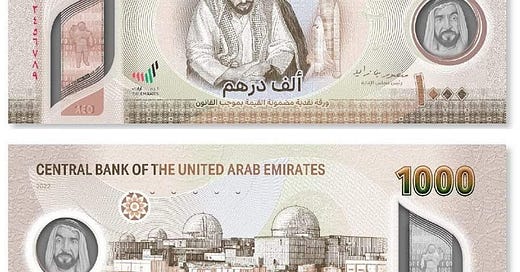



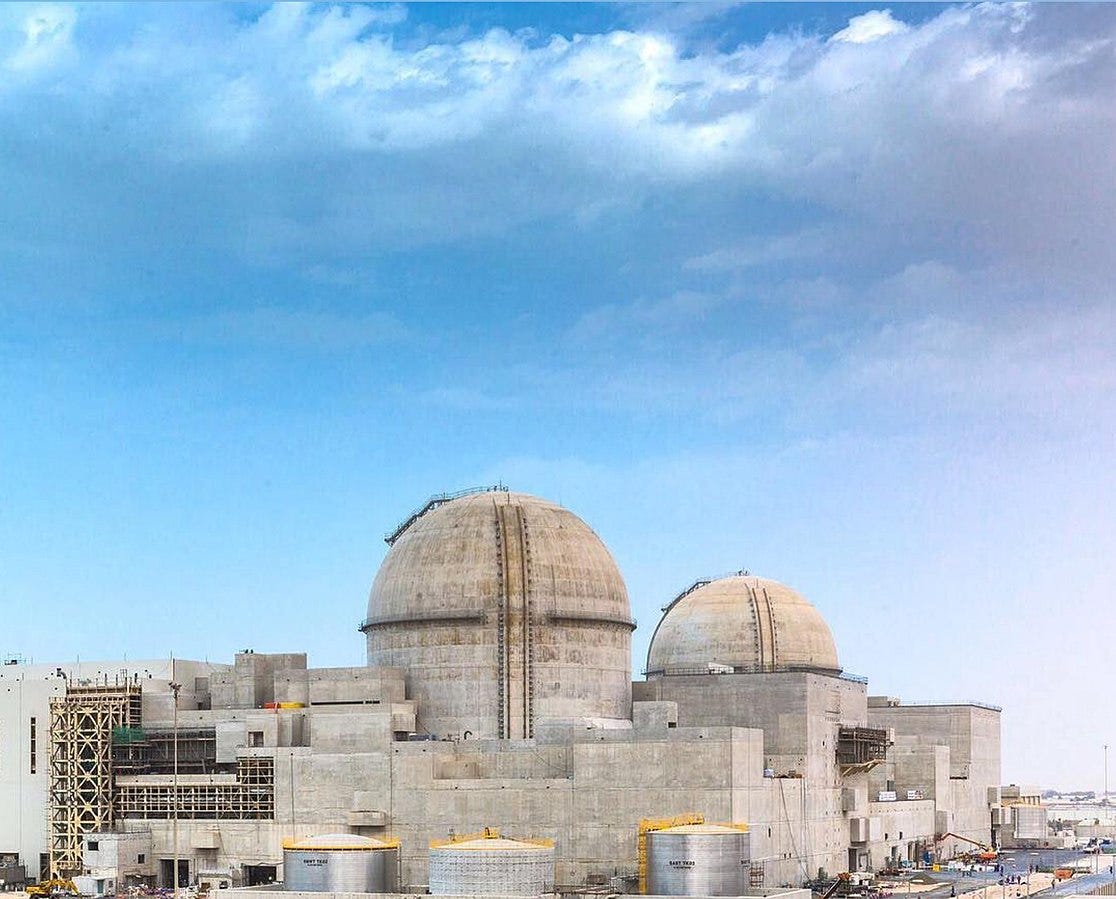
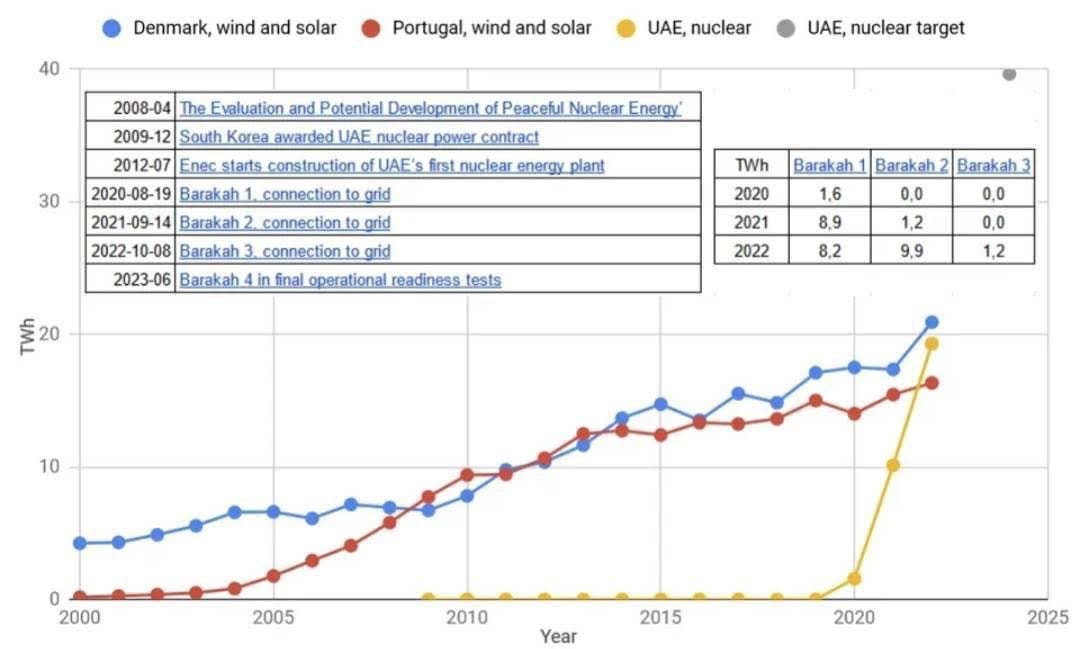
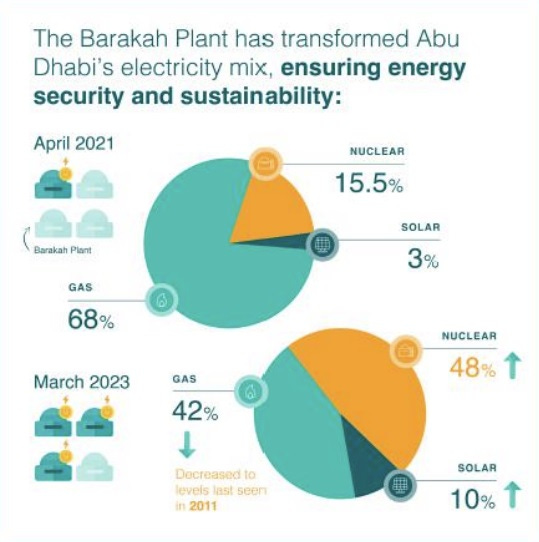
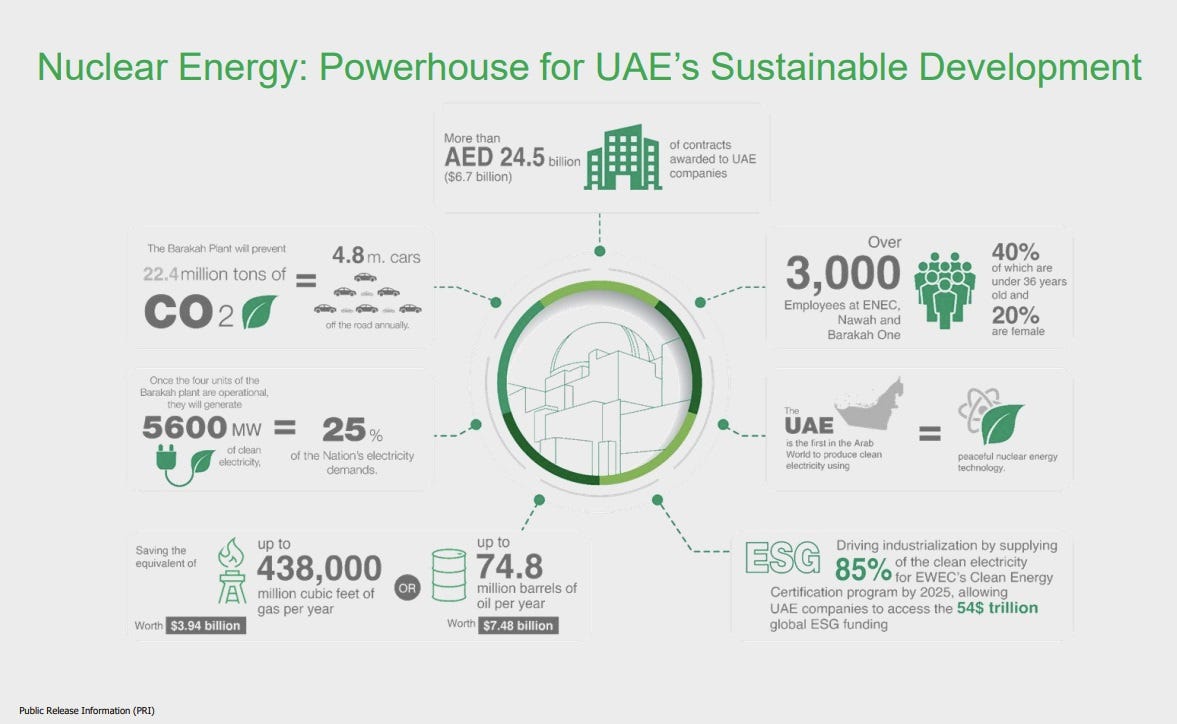
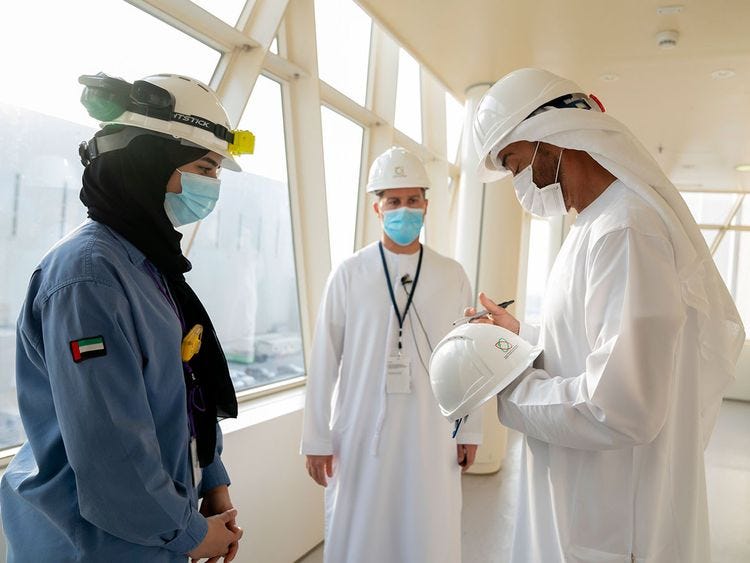
Excellent analysis. Building Barakah means the UAE will waste much less natural gas on bulk heating for power generation and will have more available to sell to overseas customers for high value added products such as petrochemicals, heating, transportation fuel, and a host of chemical applications. Used as electric generating fuel, more UAE natural gas will reduce coal consumption in a host of countries, particularly in Asia.
It should also be noted that the first unit at Barakah was completed before the operating crew had finished their training and certification. This serves as an example of how nuclear projects can be completed to a predictable time and budget.